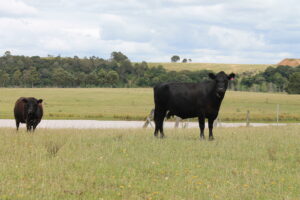Australian beef exports reached their highest monthly volume since pre-COVID (December 2019) in October, breaking through the 100,000 tonnes mark for just the second time since then. Demand from the US and China has continued, putting them as the number one and two destinations for Australian beef, while the traditional biggest market share holder Japan remains below five-year-average levels, and fell to fourth place for the month.
There’s plenty of industry focus on China at the moment, as both the Prime Minister and a Queensland state trade delegation head to the country this week with hopes of improving the trade situation for a number of Australian products, including beef, with talks of getting the currently banned Australian abattoirs off that list.
Despite the uncertainty the trade has faced throughout the year, Australian beef exports to China have increased by 30% year-on-year for the January-October period, and much like total volumes are at their highest levels since 2019. October was the second-highest volume for the year, at 19,675 tonnes, which was 14% above the five-year average for the month. Year-to-date, China’s market share has reached its highest level yet, taking 19.5% of all our beef exports.
Leading the market, however, is the US, with nearly 22% of market share so far this year, and imports of Australian beef up a very significant 76% year-on-year for January to October. Exports to the US were up by 70% for October compared to 2020, and 66% above the five-year average for the month.
The Steiner Consulting Group doesn’t expect this strong US demand to go anywhere for the remainder of the year, predicting Australian beef in the US for quarter four will be double what it was in 2022. As well as additional supply (Australian cattle slaughter is currently 24% higher year-on-year for the year-to-date), Steiner shows that since June, 90CL imported prices have been tracking at a 15-20% discount to the US domestic 90CL product, a spread which hasn’t been seen for about a decade, and not at this time of year.
Looking briefly at the other markets, South Korea took the third-highest volume of Australian beef in October, with a touch above 17,500 tonnes, 25% more than the 5-year average for the month. Japan was in fourth place for the month and sits as the third biggest market for the year-to-date, having taken about 6% less Australian beef from January to October. That said, the October volume was higher than both the previous month and the same month in 2022. MLA puts this contraction in Japan down to strong demand from elsewhere, and subdued consumer demand in that country. Rabobank reported as of May this year stock of imported beef in Japan was more than 25% higher year on year, which was the 21st month in a row that percentage had increased.
What does it mean?
Beef exports are expected to finish out 2023 strongly, with Australia’s domestic cattle slaughter rising further in recent weeks, and finished cattle prices not showing any sign of increase from their current lows. With US imported beef prices at such a discount to their domestic product, and Brazil having already gone over their US export quota, intake to America should remain strong.
Australian beef export to China could ramp up even further, however, it should be noted that with China having taken more than 170,000 tonnes of Australian beef already, and average monthly rates at their highest for November and December, there is a chance the export quota to China will be triggered, meaning tariffs will be implemented on Australian beef.
Have any questions or comments?
Key Points
- Year-to-date beef exports have surpassed last year’s total volume and are up 24% on the same period in 2022.
- The US remains as Australian beef’s biggest market this year, with nearly 22% of the market share, with October volumes 40% higher year-on-year.
- Chinese imports are also trading above the five-year average, with expectations volumes will remain strong on the back of trade talks.
Click on figure to expand
Click on figure to expand
Click on figure to expand
Data sources: MLA, Steiner Consulting Group, Rabobank, Mecardo















